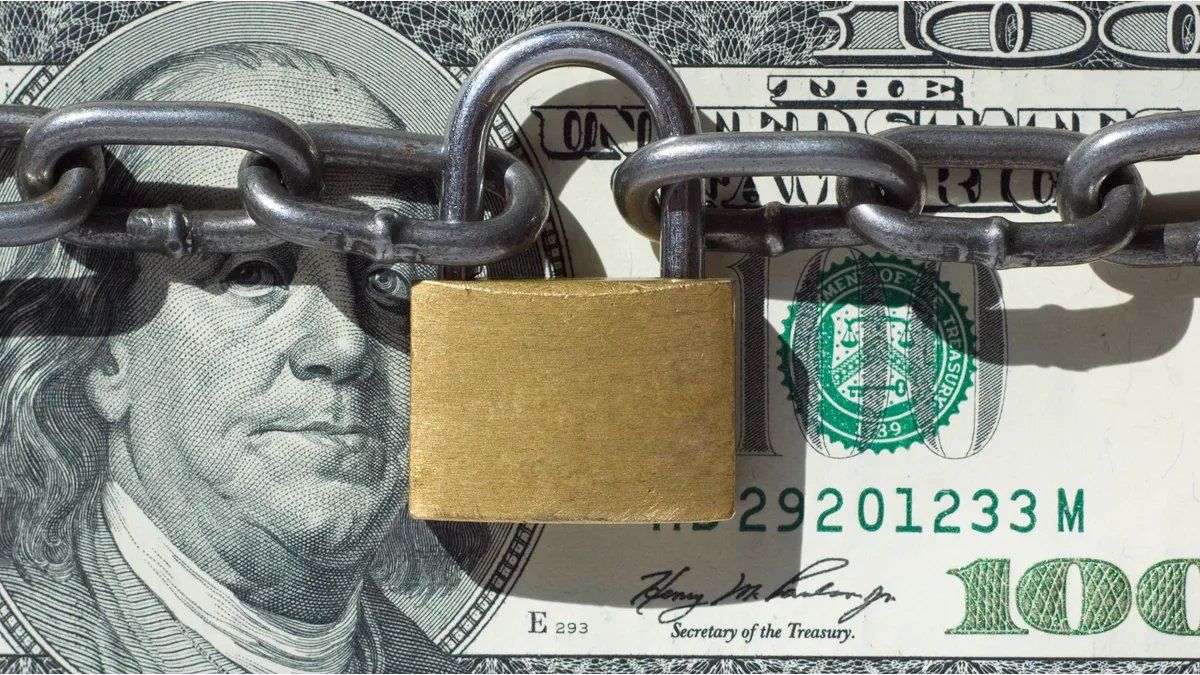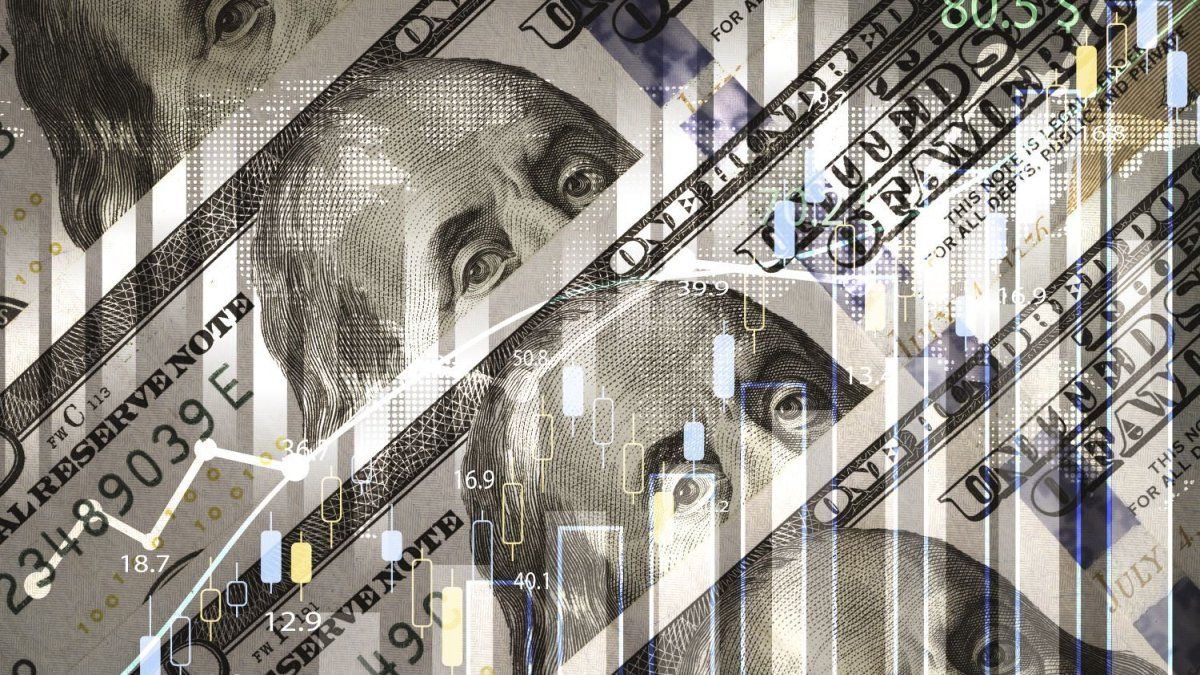rates
The market already has its forecast after the INDEC report: the CPI has a ceiling close to 7%. The Central Bank reacted to this and the overheating of financial dollars with a rate hike. The first was applied by the Treasury during the bidding (short LEDE – 132% of TEA) and the second was the modification of the rate for fixed terms that went from 78% to 81% of TNA (119.4% TEA). But is it enough?
“The rise in rates would seem to have fallen short considering that inflation is settling above 7% and fixed terms offer rates below 7%. Although they were aligned with the effective devaluation rate (crawl rate), this is not the case with the implicit devaluation rate in futures (much higher expectations), where the BCRA would still have the power to intervene (according to the current goals with the IMF),” said Paul RepettoHead of Research at Aurum Valores in dialogue with Ambit.
According to the latest PPI report, “with such a meager rise, the BCRA reduces the attractiveness of the carry trade, which at higher inflation has diminishing returns.”
For the economist Federico Glustein in conversation with this medium, “the rates until not long ago served to sustain part of the dollarization but it seems to no longer work, even paying TEA of up to 132%, with Leliq of 119% TEA”.
Soybean dollar and “squeeze” of the belt on imports
The “soybean dollar” started off on the wrong foot, taking into account the high cost paid (in issuance) in order to increase reserves. Being a voluntary scheme, the strong rises in the dollar took away the incentive of the original plan.
With seven rounds since its debut, US$1.0761 million were settled under the scheme. In the last three rounds, the situation worsened with little or no liquidation in the last three – $36m on Tuesday and $72m on Thursday, while there were no trades on Wednesday. For CIARA, the liquidation is delayed due to climatic factors and union conflict in the ports.
Faced with the refusal to adjust for price (that is, to increase the rate of devaluation), the Central Bank was forced to tighten the importer stocks by deferring the payment of services and freight for US$2,000 million.
“The only way for the government to avoid a sudden devaluation is, todaywith more restrictions. The liquid reserves are approximately 4.5 billion negative dollars, so it spends what comes in and postpones payments at the same time that the balance of payments begins to turn negative due to the lack of liquidation due to the drought and a clear appreciation of the type of official change compared to the gap generated,” Glustein explained.
The chips are in the IMF
Sergio Massa returned from the US and the panorama was more complex than when he left. However, he did pull off a victory that may help calm the waters. The IMF agreed to modify the criteria of the program agreed with Argentina and therefore, the goals will be recalibrated in order to adapt them to the new reality.
The agency’s technicians and senior economic management officials are already working on this reformulation in which “all or some of the goals could be modified,” according to sources from the Ministry of Economy, adding that “other instruments could also be used, such as postponements of maturities or advances of disbursements”.
The key goals that the country must meet to access money are: fiscal (primary deficit), monetary (monetary financing to the Treasury) and reserves (accumulation of reserves in the Central Bank). The first, which has to do with the fiscal deficit, has already been breached: The national public sector registered in March a primary fiscal deficit of $257,855.5 million, which accumulated a loss of $689,927.8 million in the first quarter, reported the Ministry of Economy. In this way, the Argentine government was deviated by almost $258,000 million with respect to the goal agreed with the International Monetary Fund (IMF) for the period.
What firepower does the government have left then?
For Glustein, “today the only support for a devaluation is the Massa – IMF alignment, which managed to recalibrate the goals and make the agency’s statements light, to avoid runs. If there is no change in expectations and the Fund continues to accompany The most certain thing is that until it is decided, there will be bleeding of currencies but with a crawling peg controlled by the monetary authority.Why does this happen? The official would have to be at least 50% more to avoid setbacks in the balance of payments and stops on imports, therefore, dollars are needed, which the State has in organizations that it should not defund, because it is a problem forward, not now.”
Repetto contributed: “conditions are difficult due to the drought and increasing the firepower to avoid it should come from access to foreign currency financing lines. The use of the Chinese swap to import could help moderate the recessive effect of import restrictions, although its effectiveness seems very limited. The problem is that the various IMF documents point to a deepening of the exchange rate arrears and this increases expectations of an exchange rate adjustment. More when goals are being recalibrated and for them to be recalibrated the conditioning could come, among other things, from there.”
Meanwhile, he clarified: “pretending that people do not seek exchange rate coverage in a context of super strict stocks, with high gaps, with the perception of an unbalanced official exchange rate (in fact, the IMF indicates a deviation for 2022 of between 10% and 25%), with drought and in the pre-electoral period, it looks voluntarist. Conditions are extremely precarious and without fresh dollars the government will have to live with this tension permanently.”
$440: run dollar or correction dollar?
The strong rises in the parallel dollars these days highlight the economic fragility of this year after the harsh impact of the drought and the difficulty the Government has in aligning expectations. However, although the high demand for dollars was discounted as it was an election year, the market highlighted the strong spikes.
This was reflected in a PPI report this week and which is important in what is to come: “trying to put a ceiling on the dollar in a context of extreme volatility and high nominality is imprudent. Although the maximums reached this week are nominal, the The violence of the daily increases should not be ignored.On Tuesday the CCL jumped 3.9%, being the second highest daily increase since the arrival of Massa (4.4% on 09/15/22 during the “soybean” dollar 1 ) and, except for this record, we must go back to 7.6% on 07/21/22 during the brief passage of Batakis”.
This provoked a strong reaction from the Government: “The lack of an anchor means that the Government must burst bonds at the close of financial days to control the MEP and CCL prices without their skyrocketing, where, in this context, they end up pressuring importers to access those markets, heating up inflation “, Glustein explained.
Is this CCL dollar a “run” dollar or is it the “correction” value? According to the PPI report, “taking a closer look, even with the rise these days, the inflation-adjusted CCL remains much closer to the lows set by Alberto Fernández in April 2022 (11.2%) and June 2022 (8. 3%) than the peaks of October 2020 (-41%) and July 2022 (-26.3%). Even excluding these running values, the management average ($490.8) remains much higher. space to continue rising, the stock of pesos in the economy tells us that there would be room to continue increasing.
According to Repetto’s opinion, the dollar at $440 “In the medium term, it’s a relatively adequate dollar.”
Source: Ambito




